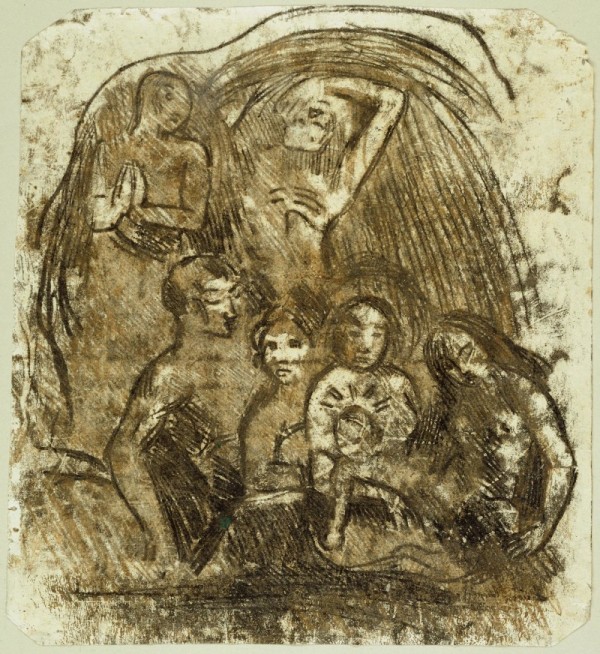Scientists Use New Techniques to Uncover Paul Gauguin’s Printmaking Process
| Sami Ghanmi | | Feb 15, 2015 09:55 AM EST |
(Photo : The Art Institute of Chicago. Gift of Robert Allerton.) Nativity by Paul Gauguin (Mother and Child Surrounded by Five Figures), c. 1902.
Paul Gauguin, born in 1848 and died in 1903, is well known for his experimental use of color and synthetist style. His works influenced many artists that came after him, such as the famous Spanish painter Pablo Picasso.
A research team has utilized a light bulb, a single-lens reflex (SLR) camera, and computational power to unveil the creative process of Gauguin's works. Some 19 of Gaugin's works are found in the Art Institute's collection.
Like Us on Facebook
Oliver Cossairt, a computer scientist at the Northwestern University, has developed computer software that can analyze the imaging data.
The new techniques reveal Gauguin's use of layered images created on paper by drawings and two different inks.
"To measure the 3-D surface of the prints, we used some very accessible techniques that can be used by art conservators and historians around the world to analyze artworks," said Cossairt.
"In applying these techniques to Gauguin's work, we came up with some interesting answers to questions about what his printing process was. The technique allows us to peel away the print's color and look at the surface structure only," Cossairt continued.
"For each image, we know the angle of the lighting and the brightness of each pixel and from that we can calculate the unknown -- the surface structure."
The research team has attempted to reproduce in the Art Institute lab what they believe is the same process used by Gauguin. The results were very similar to Gauguin's original work, according to the team.
"We never would have figured this out without Northwestern, its scientists and technology, because you don't see the evidence under the microscope," said Harriet Stratis, the Art Institute's senior research conservator.
"You can't tell the paper is just flat. The Northwestern team's lighting and imaging techniques show there is no deformation in the paper where the un-inked lines are, which blew me away." Stratis added.
TagsPaul Gauguin, art, Northwestern University, Art Institute of Chicago, nativity, Pablo Picasso, Light Bulb, SLR Camera, Computer Science, Artworks, Imaging
©2015 Chinatopix All rights reserved. Do not reproduce without permission
EDITOR'S PICKS
-

Did the Trump administration just announce plans for a trade war with ‘hostile’ China and Russia?
-

US Senate passes Taiwan travel bill slammed by China
-

As Yan Sihong’s family grieves, here are other Chinese students who went missing abroad. Some have never been found
-

Beijing blasts Western critics who ‘smear China’ with the term sharp power
-

China Envoy Seeks to Defuse Tensions With U.S. as a Trade War Brews
-

Singapore's Deputy PM Provides Bitcoin Vote of Confidence Amid China's Blanket Bans
-

China warns investors over risks in overseas virtual currency trading
-

Chinese government most trustworthy: survey
-

Kashima Antlers On Course For Back-To-Back Titles
MOST POPULAR
LATEST NEWS
Zhou Yongkang: China's Former Security Chief Sentenced to Life in Prison

China's former Chief of the Ministry of Public Security, Zhou Yongkang, has been given a life sentence after he was found guilty of abusing his office, bribery and deliberately ... Full Article
TRENDING STORY

China Pork Prices Expected to Stabilize As The Supplies Recover

Elephone P9000 Smartphone is now on Sale on Amazon India

There's a Big Chance Cliffhangers Won't Still Be Resolved When Grey's Anatomy Season 13 Returns

Supreme Court Ruled on Samsung vs Apple Dispute for Patent Infringement

Microsoft Surface Pro 5 Rumors and Release Date: What is the Latest?










